

Alexander Litovchenko based his painting 'Ivan the Terrible Showing His Treasures to English Ambassador Jerome Horsey' on the memoirs of the English diplomat, who came to Russia in 1573. The tsar would be carried to his treasure house every day (he was already walking with difficulty). There, he would tell his courtiers about the objects stored there. Once, he even demanded that a unicorn horn staff covered with diamonds, rubies, sapphires, emeralds and other precious stones be brought to him - he called the stones friends of beauty and virtue and enemies of vice.
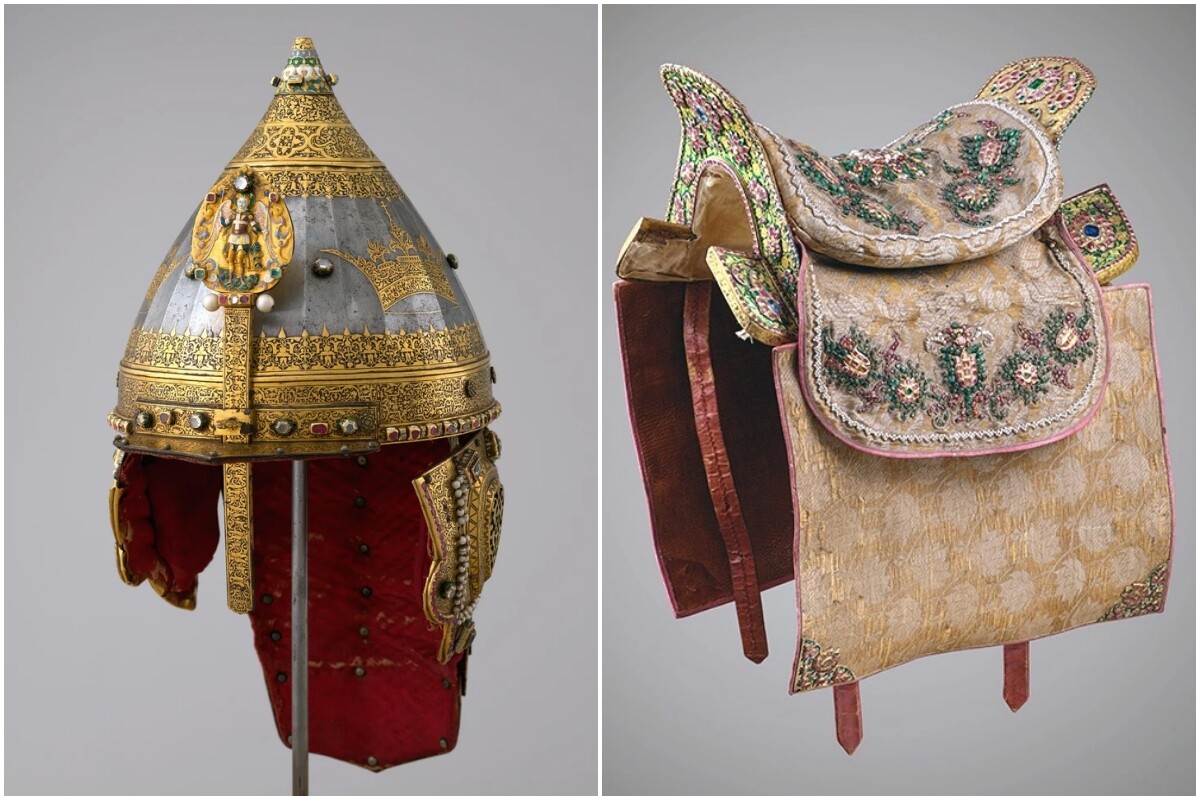
Among the treasures with which Ivan the Terrible (Ivan IV) surrounded himself in the painting are the helmet of Alexander Nevsky, the Cap of Monomakh and the Kazan Cap, lengths of brocaded altabas cloth, a nautilus cup and a cup in the form of a cockerel, a wooden-framed saddle, velvet saddle holsters, a horse's harness and stirrups of Turkish manufacture.

The most interesting thing is that Ambassador Horsey is unlikely to have seen any of the items, with the possible exception of the caps. Almost none of them entered the treasure house earlier than the 17th century. Interestingly, they are arranged in the painting in the same order in which they were displayed in the Kremlin Armory in the 19th century.

According to legend, the throne, covered with carved panels depicting scenes from the life of King David and figures of tritons, cupids and hippocampi, was in the dowry of Grand Princess Sophia Palaiologina, wife of Ivan III. It would be moved to one of the Kremlin churches when solemn prayers were being attended by the tsar. At the end of the 19th century, sculptor Mark Antokolsky made a sculpture of Ivan the Terrible seated on a carved throne - the effect was so striking that a legend that the throne had belonged to that ruler arose pretty much instantly.
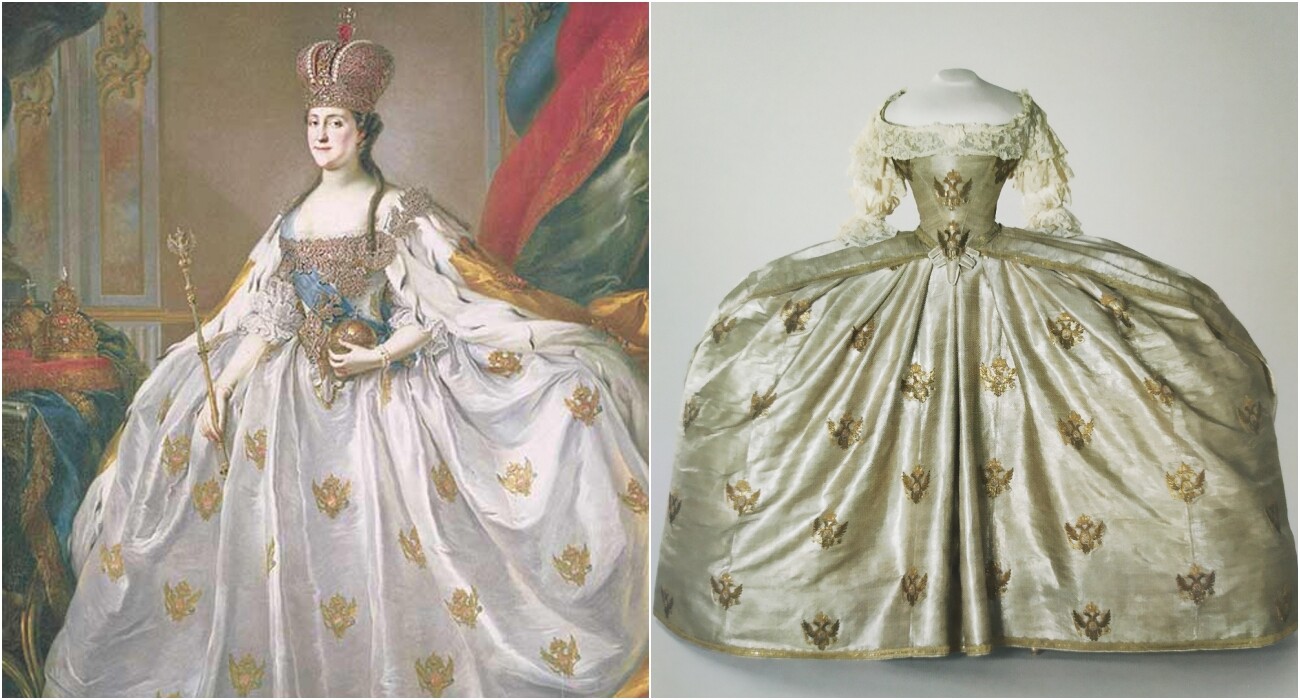
This incredibly sumptuous dress was made for the coronation of Catherine II - its silver brocade was embroidered with two-headed eagles (over 170 in total) made of silk and gold thread and with delicate Brabant lace. Stefano Torelli and Vigilius Eriksen painted impressive portraits of the empress wearing the garment.
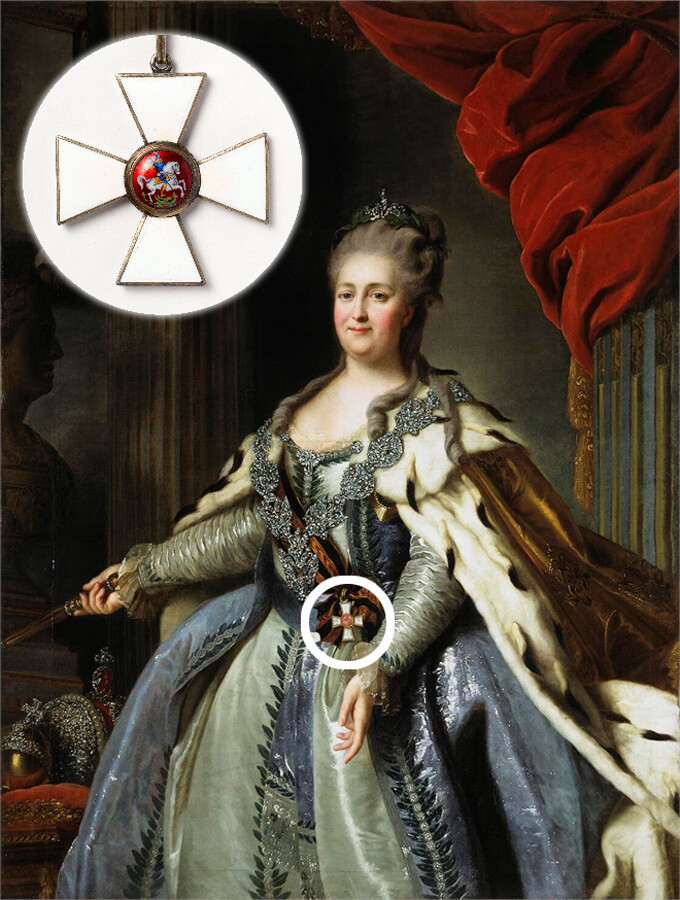
Catherine II established the Order of Saint George - Russia's highest military decoration - in 1769. The first one belonged to the empress herself. It can be seen in portraits of her painted by artists Fyodor Rokotov and Alexander Roslin.
Before the 1917 Bolshevik Revolution, a total of 25 people had been awarded the enameled gold cross with a star bearing the motto "For Service and Bravery". They included General Alexander Suvorov, Prince Grigory Potemkin and General Field Marshal Pyotr Rumyantsev.
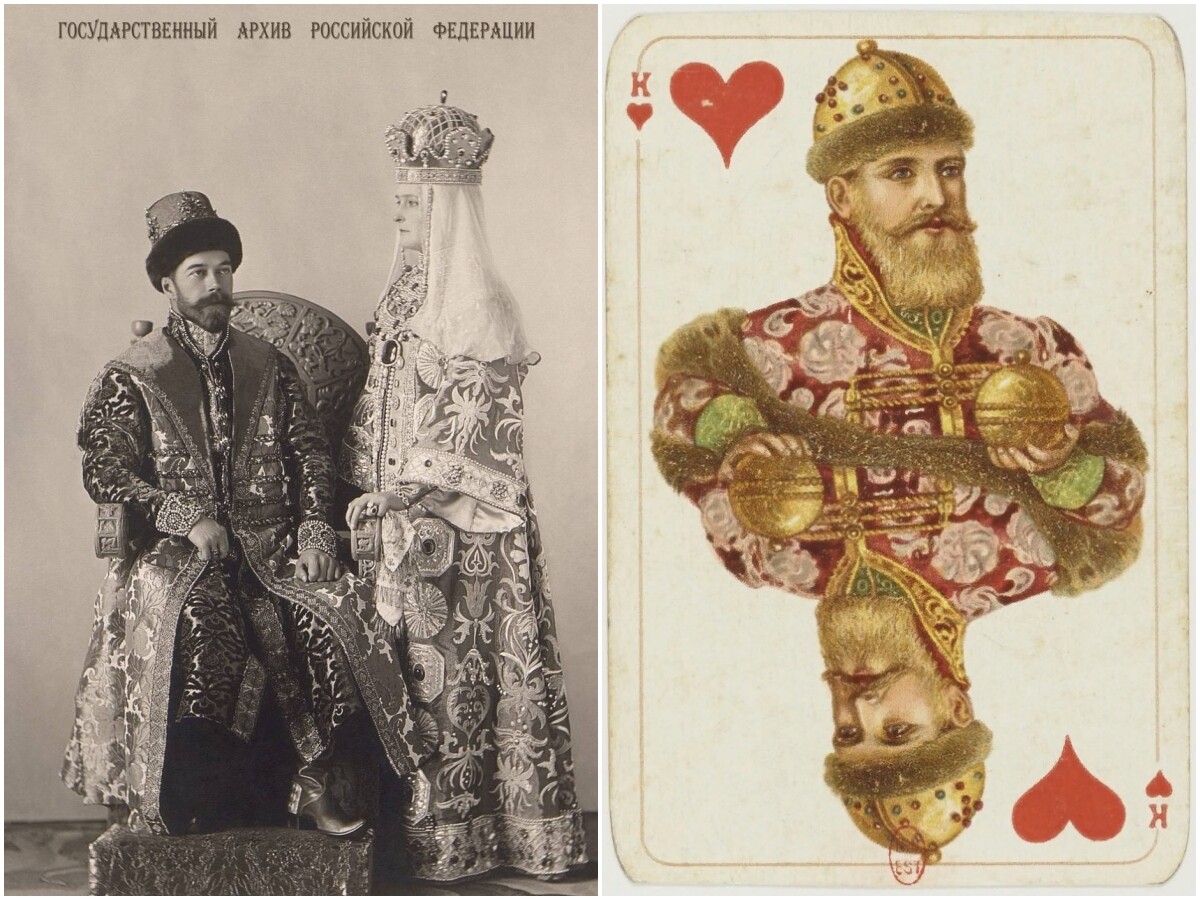
Costumes in the Russian style were sewn for those attending the sumptuous ball in the Winter Palace. Hermitage director Ivan Vsevolozhsky and artist Yevgeny Ponomaryov recreated the costume of Tsar Alexei Mikhailovich for Nicholas II to wear. In 1911, German company ‘Dondorf’ released a set of playing cards inspired by the participants in the ball. The last Russian emperor was depicted as the King of Hearts.

This conical steel helmet, adorned with depictions of Christ, the Mother of God, John the Baptist and St. Nicholas, as well as angels, was made by Muscovite and Greek craftsmen in the latter half of the 14th century. It most probably belonged to one of the grand princes, since ordinary helmets lacked this degree of decoration. It is the one worn by knight Dobrynya Nikitich in Viktor Vasnetsov's painting ‘The Bogatyrs’.

The four-seater ‘kolymaga’ - a closed carriage with windows and crimson velvet upholstery - originally belonged to Frantsisk Lesnovolsky, the ‘starosta’ (provincial administrator) of Bryansk, and then to Boyar Nikita Ivanovich Romanov, cousin to Mikhail Fyodorovich, the first of the Romanov tsars. The richly decorated ‘kolymaga’ can be seen in Vasily Surikov's painting 'The Morning of the Streltsy Execution'.
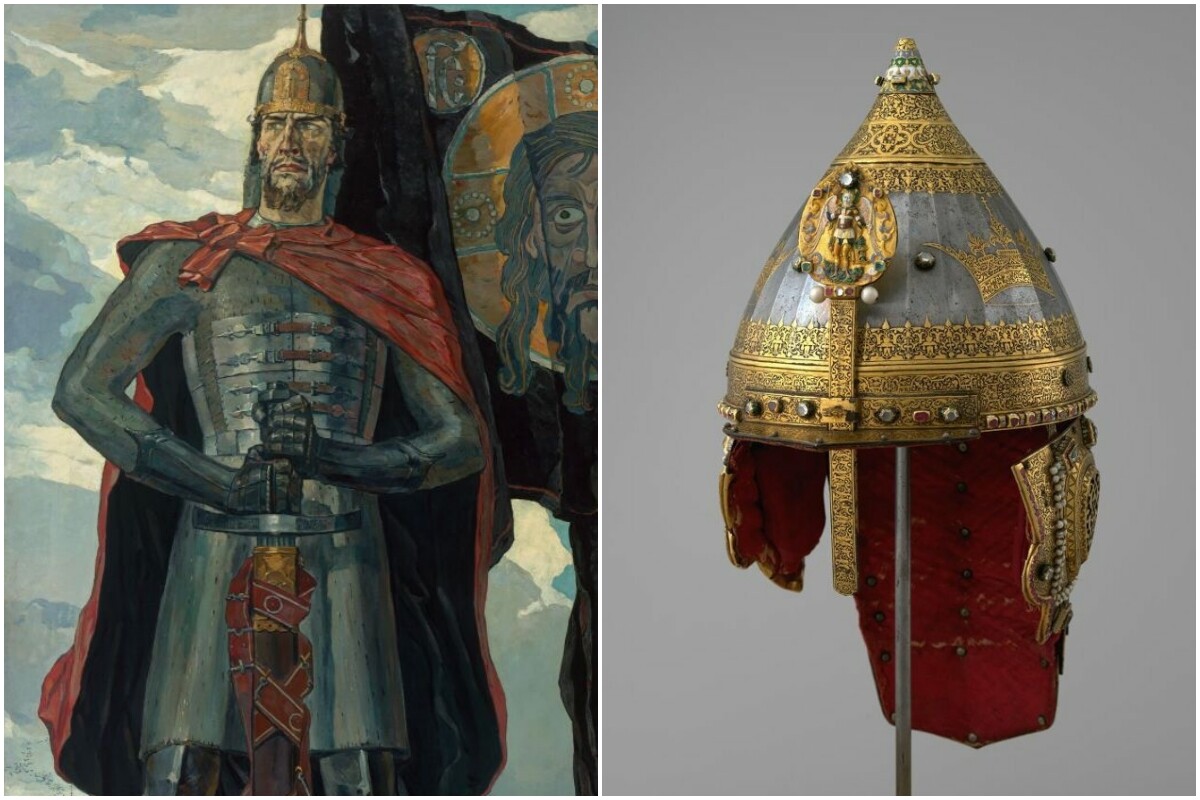
Without a doubt, the helmet can confidently be described as the most famous helmet in Russian history. It is easily recognizable, featuring as it does on the Greater Coat of Arms of the Russian Empire, the coats of arms of crown princes and grand dukes and on the Order of Alexander Nevsky. This is the helmet Nevsky is wearing in the painting by Pavel Korin and also in the mosaic at Moscow's Komsomolskaya Metro (subway) Station. In fact, the helmet - or "Jericho cap", to be precise - belonged to Tsar Mikhail Fyodorovich. And it was made and ornamented with gold, precious stones and a relief image of the Archangel Michael by court armorer Nikita Davydov.
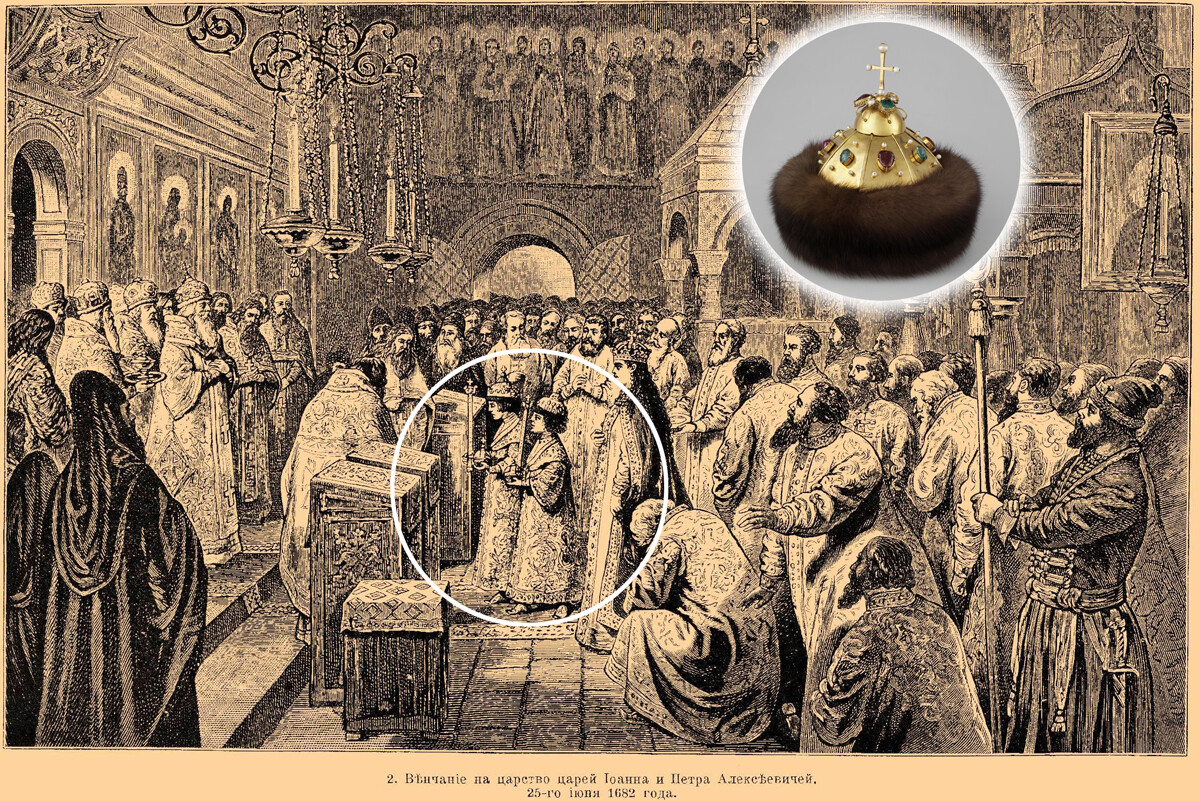
A dual coronation urgently required two tsarist crowns to be found. Ivan Alexeyevich, as the elder of the brothers, wore the Cap of Monomakh, while a Cap of Monomakh "of the second set" was made for Pyotr Alexeyevich (future Peter the Great). Its dome is decorated with gold filigree, spinels and emeralds and surmounted by a cross adorned with pearls. Artist Karl Brozh (Karel Brož) portrayed the two successors to the throne at the moment of their coronation in the album ‘Coronations of the Russian Tsars’.
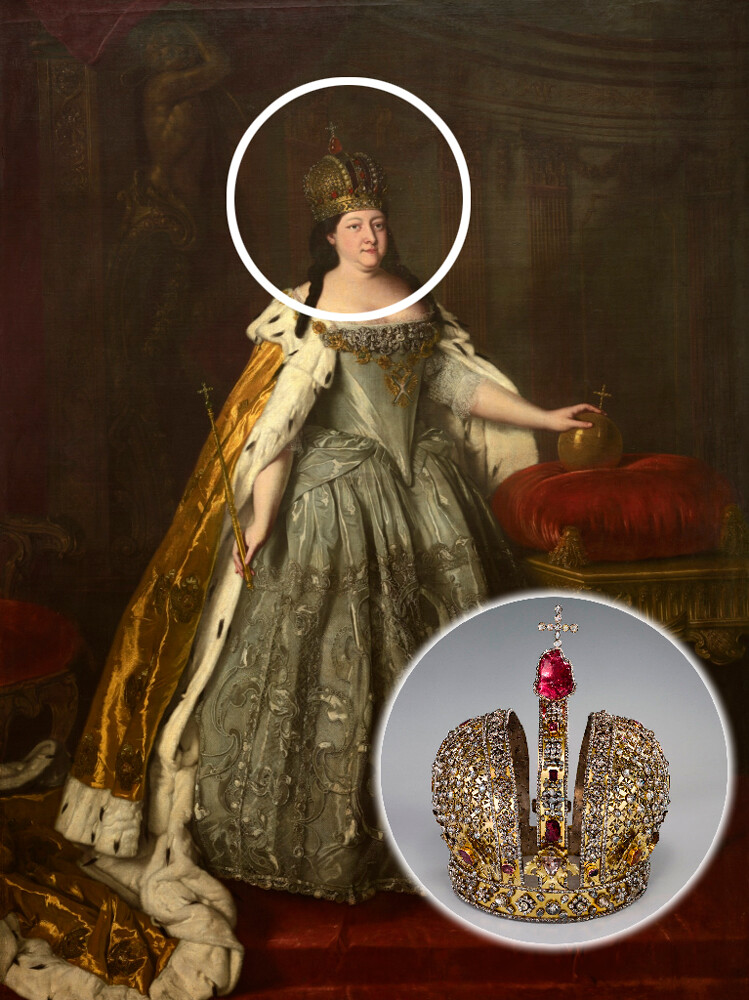
Witnesses to the coronation of Empress Anna Ioannovna (Anna of Russia) had trouble believing that preparations for the ceremony had taken just a few months. In that time, craftsmen had managed to make her a dress of French brocade and two crowns - one for the coronation itself and the second for ceremonial receptions. The Imperial crown is decorated with 2,500 diamonds, rubies and tourmalines. Court painter Louis Caravaque painted Anna Ioannovna in all her splendor in a dress shimmering with silver and accentuated by a sumptuous ermine mantle, while, on her head, donning her glittering crown.
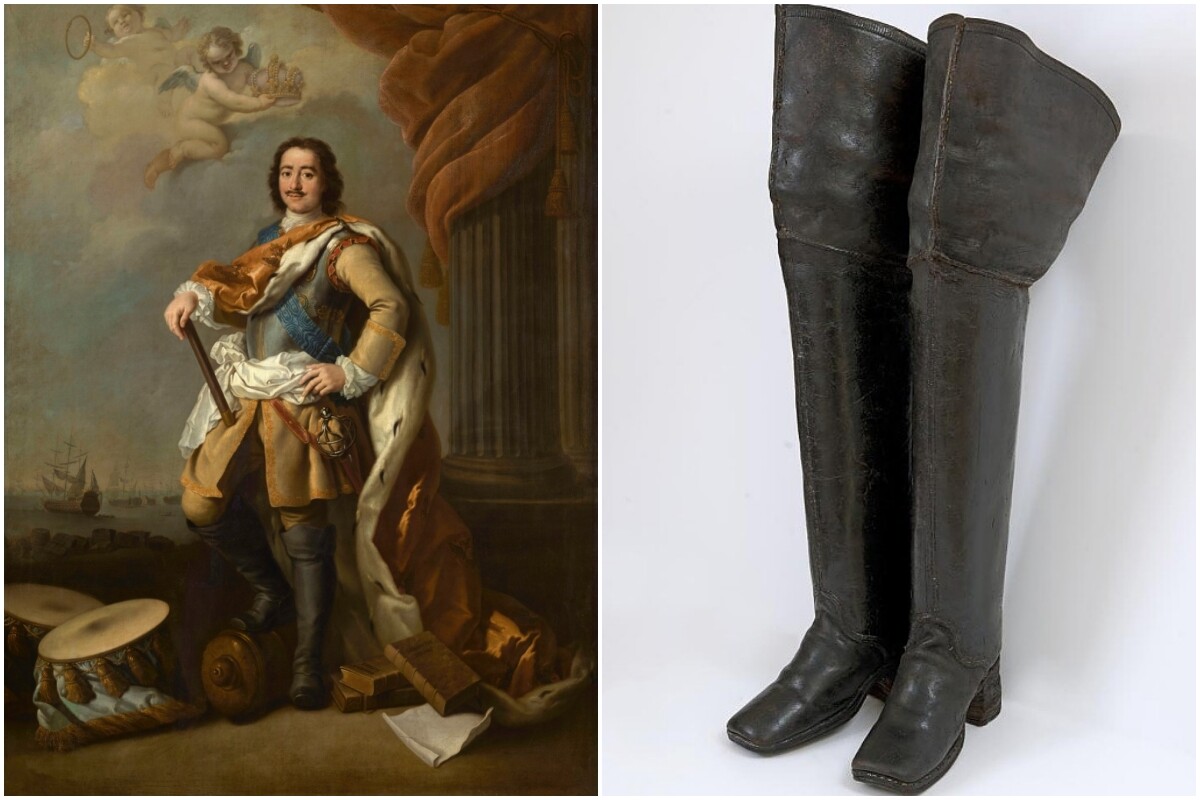
The emperor found time not just to run the country and open a window onto Europe, but also to make his own footwear. For instance, he crafted his own knee-high boots ("botforty") in the Dutch style. This kind of boot was worn above fur boots: it was almost 90 cm high and additionally had a 7.5 cm heel. Peter the Great was often depicted wearing knee-high boots in portraits: for instance, in paintings by Pyotr Drozhdin and Alexei Antropov.
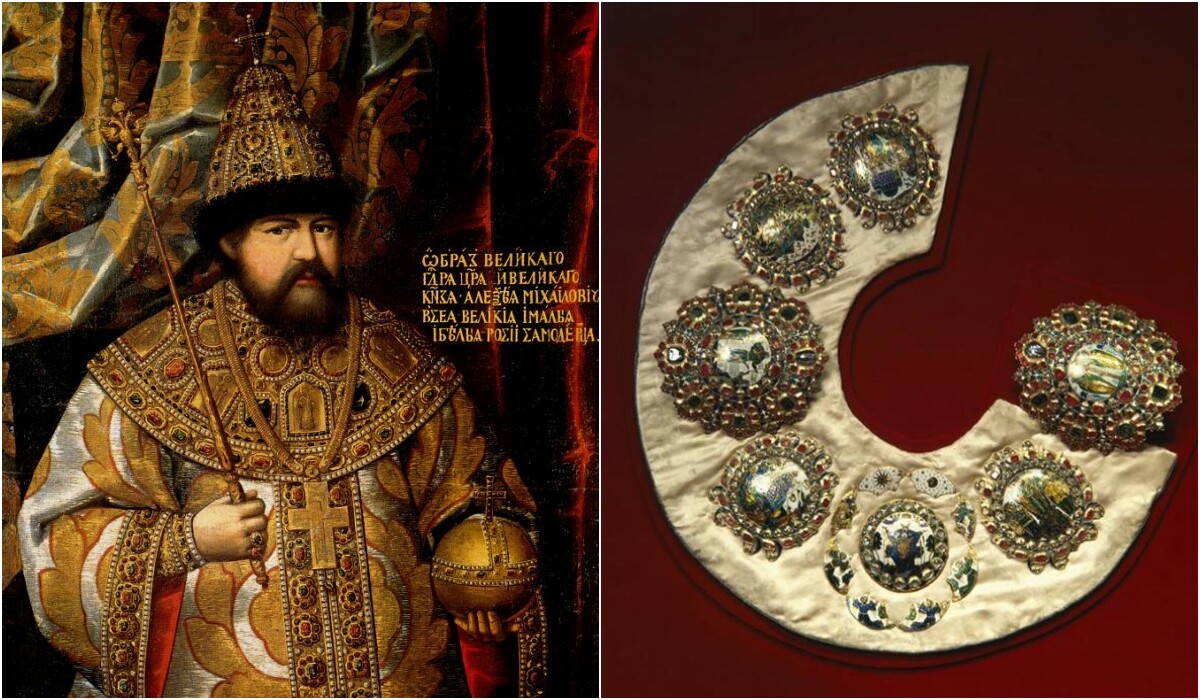
The most magnificent of all the tsarist regalia is the shoulder mantle. This broad, circular collar, adorned with images of the saints and precious stones, was the sole symbol of authority that was not handed down from tsar to tsar. Each new monarch had to have his own made. The shoulder mantle for Tsar Alexei Mikhailovich was crafted by Istanbul masters: It has seven medallions encrusted with rubies, diamonds and emeralds with images of the Mother of God, Saints Constantine and Helen, Basil the Great and Mercurius the Warrior Saint. In one of the tsar's most famous portraits, painted by a master of the Kremlin Armory, Alexei Mikhailovich is portrayed in ceremonial robes, holding an orb and scepter. And his shoulders are draped with the precious mantle.
Dear readers,
Our website and social media accounts are under threat of being restricted or banned, due to the current circumstances. So, to keep up with our latest content, simply do the following:
If using any of Russia Beyond's content, partly or in full, always provide an active hyperlink to the original material.
Subscribe
to our newsletter!
Get the week's best stories straight to your inbox